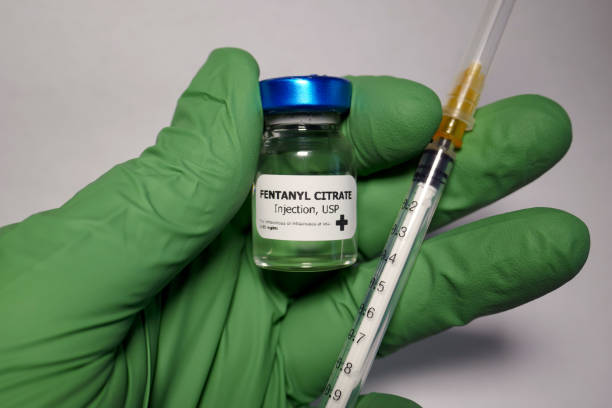The fentanyl crisis in America has emerged as one of the most pressing public health challenges of the 21st century. Fentanyl addiction, characterised by a dependence on this potent synthetic opioid, has devastating consequences for individuals, families, and communities. As the opioid epidemic continues to evolve, the government’s response to this crisis has become a focal point of national discourse, prompting an examination of the strategies employed to mitigate its impact.
Understanding Fentanyl and Its Impact
Fentanyl is a synthetic opioid that is approximately 50 to 100 times more potent than morphine. Originally developed for pain management in clinical settings, its illicit use has surged, contributing to a sharp increase in overdose deaths. According to the Centers for Disease Control and Prevention (CDC), synthetic opioids, primarily fentanyl, were involved in nearly 70% of all opioid-related deaths in 2021. The statistics are stark: over 71,000 deaths were attributed to synthetic opioids in that year alone, highlighting the scale of the crisis.
Government Response: A Multi-Faceted Approach
The U.S. government’s response to the fentanyl crisis has been multi-faceted, involving law enforcement, public health initiatives, and legislative measures. One of the key components of the government’s strategy has been the enhancement of law enforcement efforts to combat the trafficking of fentanyl. In recent years, the Drug Enforcement Administration (DEA) has intensified operations targeting the production and distribution networks of fentanyl. This includes collaboration with international partners to disrupt supply chains that funnel fentanyl into the United States.
In addition to law enforcement, public health initiatives have also played a crucial role in addressing the crisis. The government has invested in expanding access to treatment for substance use disorders, recognising that fentanyl addiction is a complex medical issue requiring comprehensive care. The Substance Abuse and Mental Health Services Administration (SAMHSA) has increased funding for treatment programmes, aiming to provide a range of services from detoxification to long-term rehabilitation.
Moreover, the government has promoted the use of naloxone, a life-saving medication that can reverse opioid overdoses. The distribution of naloxone has been expanded to first responders, community organisations, and even the general public, empowering individuals to act in emergency situations. According to the CDC, naloxone has been credited with saving thousands of lives, underscoring its importance in the fight against fentanyl-related overdoses.
Legislative Measures and Policy Changes
Legislation has also been a critical aspect of the government’s approach to tackling the fentanyl crisis. The SUPPORT for Patients and Communities Act, enacted in 2018, aims to address the opioid epidemic through various measures, including the establishment of new programmes to enhance prevention, treatment, and recovery services. This legislation has provided funding for research into non-addictive pain management alternatives, recognising the need for innovative solutions to prevent addiction before it starts.
Additionally, the federal government has implemented stricter regulations on the prescribing of opioids, aiming to reduce the availability of these substances and thereby curtail the potential for addiction. The CDC’s guidelines for prescribing opioids for chronic pain have been widely adopted, promoting safer prescribing practices among healthcare providers.
Challenges and Criticisms
Despite these efforts, the government’s approach to the fentanyl crisis has not been without criticism. Some experts argue that law enforcement-centric strategies may not adequately address the root causes of addiction. Critics contend that focusing solely on interdiction and criminalisation can hinder individuals from seeking help, perpetuating the stigma surrounding substance use disorders.
Furthermore, access to treatment remains a significant barrier for many individuals struggling with fentanyl addiction. While funding for treatment programmes has increased, disparities in access persist, particularly in rural and underserved areas. A report from the National Institute on Drug Abuse indicates that only about 10% of individuals with substance use disorders receive the treatment they need, highlighting the urgent need for more comprehensive solutions.
The Path Forward
As the fentanyl crisis continues to evolve, it is imperative for the government to adopt a holistic approach that encompasses prevention, treatment, and harm reduction strategies. This includes investing in education and awareness campaigns to inform the public about the dangers of fentanyl and the importance of seeking help for addiction.
Moreover, fostering collaboration between law enforcement, public health officials, and community organisations can create a more integrated response to the crisis. By addressing the social determinants of health and providing support for individuals in recovery, the government can work towards reducing the stigma associated with addiction and promoting a culture of compassion and understanding.
In conclusion, the government’s approach to tackling the fentanyl crisis in America reflects a complex interplay of law enforcement, public health initiatives, and legislative measures. While progress has been made, significant challenges remain. A concerted effort to prioritise prevention, treatment, and harm reduction will be essential in overcoming this crisis and saving lives. The fight against fentanyl addiction is far from over, but with a comprehensive and compassionate approach, there is hope for a brighter future.



